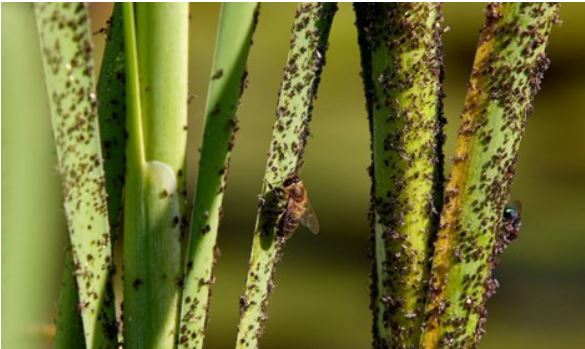Horticultural lighting in indoor growing facilities and nighttime treatment with specific wavelengths on outdoor crops are under review for effectiveness in reducing pests and diseases that impact yields and profits.

New research suggests that indoor growers and greenhouse operators use lighting in order to increase the effectiveness of fighting pests as part of an Integrated Pest Management program. Integrated Pest Management (IPM) is a holistic approach to managing pests that combines methods and strategies, including physical, biological, and chemical processes. IPM creates an environment that is less favorable to pests and utilizes biological controls, such as natural predators or parasites, to control pest populations. These biological controls are called biologicals, biocontrols, or just bios.
Lighting can impact biocontrols in three ways: photoperiod, intensity, and spectrum:
Photoperiod
Insects under stress often go dormant in a process known as diapause, most typically in winter. Hours of light per day (photoperiod) are one of the most potent triggers of diapause. Supplemental lighting can extend the photoperiod for biocontrols and keep biocontrol species active in fighting pests through the winter. This strategy is "breaking diapause" for biocontrols.
Light intensity
Some biocontrol parasites/predators become more effective with increased light intensity and photoperiods. The increased intensity makes these biocontrols better at controlling pests. Research has also shown that increased light intensity can make blue and yellow sticky traps more effective at trapping specific pests.
Spectrum
Different wavelengths of light have been shown effective at fighting certain plant diseases. For example, red light suppresses downy mildew in basil and improves plant growth. The red light treatment is done at night to prevent spore spread.
The University of Florida's Gulf Coast Research and Education Center team studied the impact of UV light applied at night to control spider mite eggs. Their work may be interesting for indoor growers to review and consider for further exploration.
Chris Brown, Chairman, CEO, and Founder of Ultra Yield Solutions, advises CEA operators, "Look for a lighting partner with future-focused expertise to guide you as you consider lighting and controls options." He continues, "The Ultra Yield Solutions team provides insights to help growers plan lighting installations that adapt to changing needs and take advantage of emerging techniques for maximum yield at harvest time."
Thoughtful planning and design of LED lighting and control installations allow indoor growers to utilize emerging pest and disease control techniques while enjoying the benefits of reduced energy costs and more sustainable use of energy resources. Ultra Yield Solutions assists growers in developing lighting plans customized for each facility's crops, yield goals, budget, and location, with an expert eye on future functionality.
TrendForce 2023 Global LED Lighting Market Analysis-1H23
Publication dates: February 10, 2023; July 31, 2023
Language: Traditional Chinese/English
File format: PDF and EXCEL
Number of pages: 100 (in each publication)
If you would like to know more details , please contact:











